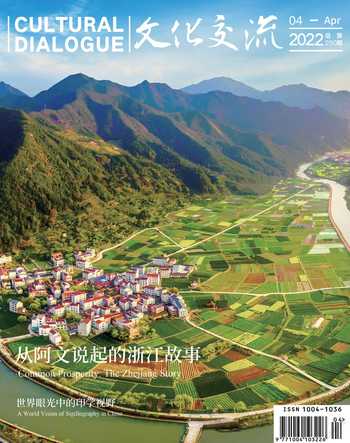向世界讲述余杭之韵
余纪萱
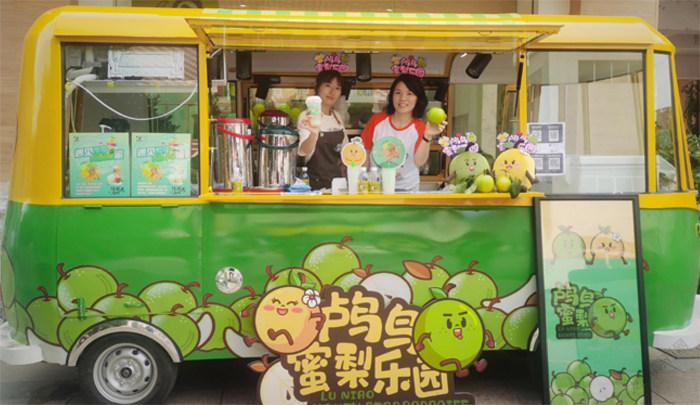
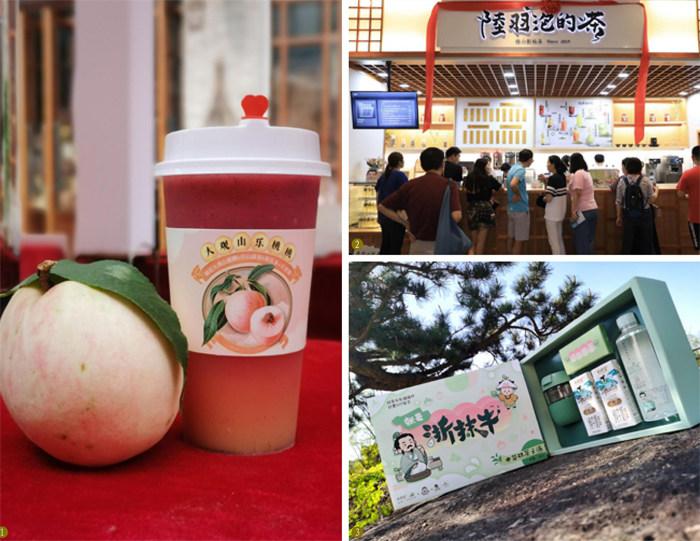
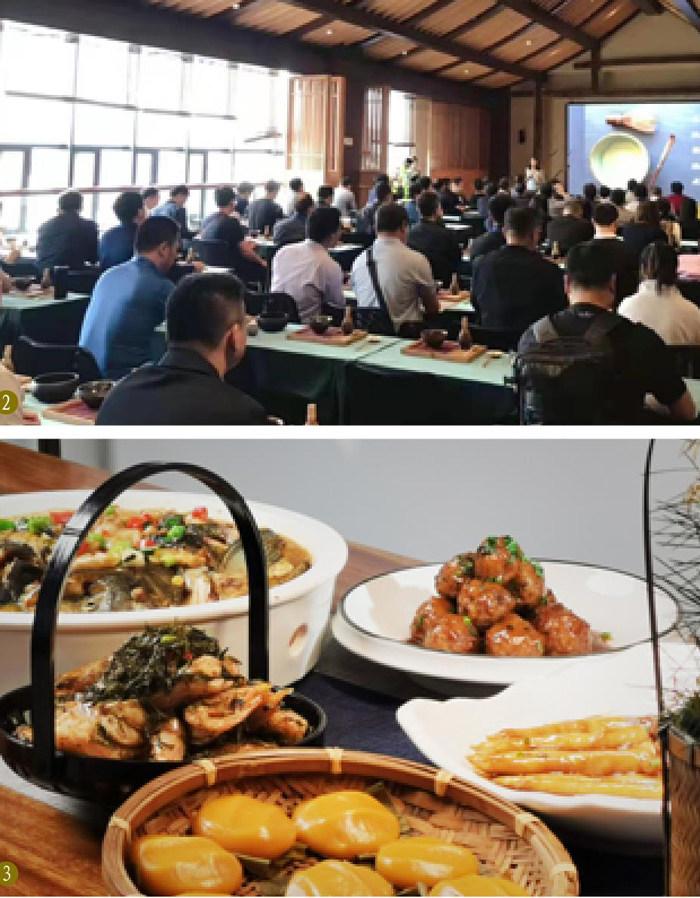
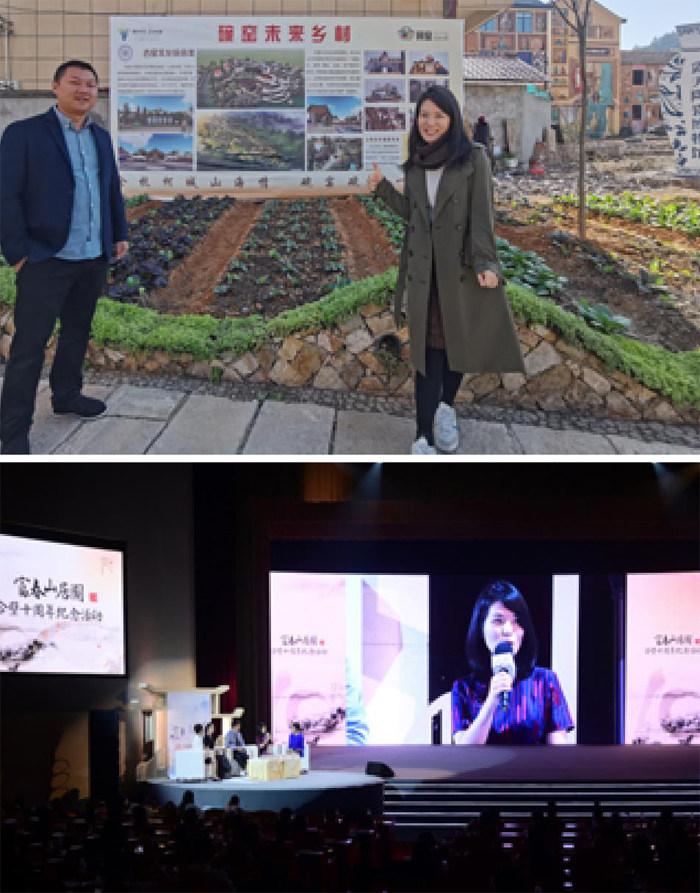
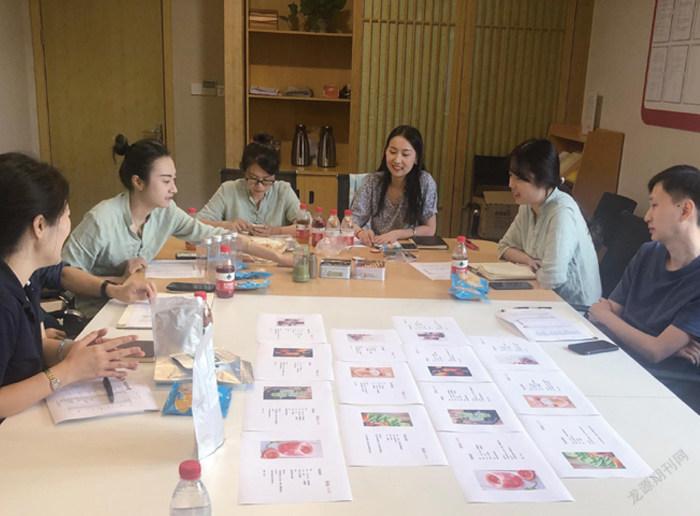
我出生在台湾省,父母都是客家人,爸爸的老家是苗栗,妈妈则在新竹长大。从小妈妈就常说,我们的祖先在广东梅县,外公的祖辈就来自那里。
11岁那年,因为父母工作的关系,全家搬到了离福州很近的一个岛上。从那个时候开始,在妈妈的带领之下参加了两岸妇联组织的许多文化交流活动,懵懵懂懂的我也因此对海峡的另一头产生了憧憬。
高中毕业的那一年,带着两个沉甸甸的皮箱,第一次离开家乡,离开父母的温暖港湾,到了日本留学生活,结识了来自浙江杭州、毕业于杭州外国语学校的他。在他的指导和陪伴下,我考上了京都大学。我们一起在日本求学、读研、工作、结婚和买房。突然有一天,他说老家的奶奶跌倒了,正在医院里急救。在向单位请假、购买机票、等待回国的那几天里,时间仿佛停止,从未经历如此煎熬。这件事情,促使我们开始考虑回国和亲人团聚的计划。
2018年, 我们在微信公众号上看到了杭州余杭区面向海外(境外)世界百强高校毕业生发布的首批招聘计划,在先生和父母的支持和鼓励下,我顺利考进了余杭区旅游集团。2019年2月,我成为了新杭州人、新余杭人。非常有缘的是 ,我姓余 ,余杭的余。
唱响径山禅茶宋韵文化
在日本读大学时期,外国留学生最喜爱的课程之一便是“茶道”。正是因为这一茶道课程,第一次了解到日本茶道起源于余杭径山,和禅茶文化结下了第一道缘。来到余杭之后,我被安排到余杭西部和日本茶文化有着深厚渊源的径山,从事文化挖掘等文旅工作。
唐宋时期中国佛法鼎盛,众多日本僧侣慕名前来中国学习佛法,在习佛过程中,他们接触到了寺庙中戒规森严、用来悟道参禅的茶宴文化,并将其带到日本继承发扬,经过千年的岁月更迭,最终演变为今日的日本茶道。中日两国的茶文化,可以说有着千丝万缕的紧密联系。最初的日子里,我就这样一头栽进了径山充满魅力的千年禅茶文化的海洋中,走径山古道,访径山寺,向径山脚下的茶文化研究者、茶生产相关人士拜师学艺,找寻《大观茶论》《茶具图赞》等各种书籍,文言文看不懂就遍尋各种白话译本,几个月后,和小伙伴们一起开发出了“径山宋代点茶体验课程”。
余杭径山,是茶圣陆羽著经之地,日本茶道之源。“南宋时期,日本禅僧圆尔辨圆来到当时江南五山十刹之首的余杭径山寺学习佛法,之后,他将径山茶籽带回日本,成为日本静冈茶的茶祖。他是日本东福寺的开山祖师,后来被尊称为圣一国师。”每次在台上讲述禅茶文化历史时,我总会向大家展示一张在日本京都东福寺拍到的资料介绍图片,而这个时候,坐在台下的国内外大小听众表情总是充满惊喜,有时候还会发出“哇哦”的赞叹声。
体验课结束之后,眼睛发光的游客常常会称赞说:“小余老师,你说得可真好,原来这其中有那么多文化和历史渊源!”这时,我就深刻地感觉到,让更多人知道余杭径山的千年禅茶宋韵文化,是一件多么有意义又多么有成就感的事情。
为了打造出属于杭州也属于世界且更为独特的禅茶形象,2019年,我们推出了符合大众认知的“忠于禅心 · 精于茶道”的“陆羽与茶小僧”文旅IP形象。经过宣传和推广,这一IP形象荣获2019杭州 · 浙西文旅十佳文旅融合IP,并从此开始有了更多的应用和实践。
刚开始的时候,我们做了旅游宣传册、旅游地图,并且配以各种推广活动,但同时也意识到,“没有产生经济效益,项目是走不远的”。在全体同事的共同努力下,我们决定用径山茶为原材料,加入本地的食材,在大径山旅游集散中心的候车大厅旁推出一家新式茶饮店。2019年10月1日,“陆羽泡的茶”创始店就这样登场了。
我们找到了本地企业浙茶集团九宇有机,与其展开战略合作,所有的茶原料都是来自径山茶园,而牛奶则摒弃人工奶精,使用了本地的新希望巴氏杀菌牛奶。其中,“晏坐红莓莓”“鹏抟绿芒芒”等一系列光名字就令游客们感到新奇的水果茶,取名时的灵感均来源于径山五峰 ;而“正清牛乳抹茶”“和雅牛乳红茶”则是结合了禅茶文化精神 ;“万寿玄米”“金桂蜜梨”这类曾不被看好的冷泡径山茶,更是意外地收获了不少好评。经过近一年的口碑相传,我们的店在美食APP上被推荐为“来径山必喝奶茶店”。
为了进一步推广本地的农产品,“陆羽泡的茶”还结合余杭瓶窑镇的特产蜜桃,开发出“大观山乐桃桃”茶饮 ;另外,还和余杭鸬鸟镇合作,使用鸬鸟之宝——蜜梨推出一款名为“养生小梨君”的养生饮品。在销售茶饮的同时,我们也积极和附近的果园进行联动,向游客推荐新鲜、甜美的本地水果,让游客不仅能品尝到具有深厚文化底蕴的茶饮,也对余杭西部富有乡村特色的农产品有了更多的了解和喜爱,从而进一步提升了果农收入,为浙江高质量发展建设共同富裕示范区贡献一份绵薄之力。
用创新手法刺激文旅多元消费,进而带动本地青年就业,将文旅融合赋能乡村振兴,推进余杭西部富美,助力共同富裕。2020年年底,大径山“陆羽与茶小僧”更是成功入选首批浙江省文化和旅游IP。
除了茶饮之外,团队也热衷投身于跨界文创产品的开发。比如,我们陆续推出结合径山特色的绿茶、红茶、抹茶 “三味径山茶”礼盒,设计出融入游客美好期望的“祈福茶包”,与“双枪竹木”联名生产出径山福箸等文创产品。值得一提的是,我们共同努力的成果——“浙抹牛”抹茶牛乳摇摇杯组合荣获“韵味杭州 · 有礼相伴”2021杭州市伴手礼创意设计大赛的银奖,这个组合包含了径山抹茶、鸬鸟矿泉水、良渚原创品牌摇摇杯和新希望牛乳,成为城市伴手礼中的热门商品套装。
把余杭当作自己的家乡
去年2月,第二家“陆羽泡的茶”在杭州未来科技城海创园开业,其中一位店员是来自径山的“90后”女孩,她说,“可以这样宣传推广家乡,这种工作机会特别难得”。店铺里,摆放着大径山的文化旅游宣传地图、漫画,播放着“陆羽带你游大径山”的文化旅游宣传片。小小一个店面,让越来越多来到未来科技城工作、生活的人们,可以购买到余杭西部的农业加工品,接触到深厚的文化底蕴,这也是建立未来科技城与瓶窑、径山、黄湖、鸬鸟、百丈等西部五镇协作机制,实现“1+5”区级山城协作联动、互相促进、共同发展的生动体现。
去年6月1日,我獲邀参加《富春山居图》合璧十周年纪念活动,并担任来杭就业台胞青年的代表,在活动现场分享了“余杭大径山文旅IP与乡村振兴”的案例。在浙江省人民大会堂的演讲台上,我自信又开心地说着和大家一起努力、将余杭径山的一片片“绿叶子”打造成一片片“金叶子”的故事,听台下的小伙伴们后来说,我讲话的时候整个人都在发光。
是的,那是因为我已经深深地把这里当成了我的家乡。
去年10月,我加入杭州市余杭区文化和广电旅游体育局的大家庭,和团队一同深度挖掘区内各地文化故事,推出了全新的“余杭文旅新视觉形象”,并在产品上进行了多维应用。我们还走进余杭西部乡村的各个角落,拍摄当地农家乐和餐馆精心烹调的传统美食,例如百丈竹筒饭、径山茶香虾、鸬鸟梨酥肉等特色菜肴,推出一系列“美食+文旅”创意短视频,进一步打响“诗画浙江 · 百县千碗”余杭特色美食品牌,用符合更多受众视听习惯的传播手法,提升乡村美食文化知名度,以美食赋能乡村振兴,在推动高质量发展建设共同富裕示范区的过程中体现独特余杭的“余”韵。我们还致力于杭州余杭与衢州柯城的“山海协作”项目,在“中国第一农民画村”衢州余东村分享余杭发展的经验,针对两地在文化旅游、文创产品开发等方面可携手共进的合作点开展了深入探讨。
来到杭州余杭,是我深入了解中华文化的新开始,也是我融入祖国怀抱、促进两岸交流的新起点。未来,希望通过努力,为文旅融合赋能乡村振兴、为助力浙江高质量发展建设共同富裕示范区贡献更多的力量,让属于浙里的魅力、属于余杭的“余”韵为更多人所知、所感、所爱,让世界看见浙江!
I was born in Taiwan province of Hakka parents. My father’s hometown is Miaoli, and my mother grew up in Xinzhu. My mother used to tell me when I was a child that my grandfather’s ancestors came from Meixian county, Guangdong province.
When I was 11, our family moved to an island very close to Fuzhou because my parents worked there. At the time, I took part in many cultural activities organized by women’s federations of both the mainland and Taiwan. From that time on, I had a vague longing for the other side of the Straits.
Upon graduating from high school, I left my hometown and went to study in Japan. I met a guy from Hangzhou, who became my life partner. He graduated from Hangzhou Foreign Language School. Under his guidance and company, I was enrolled in Kyoto University. We went through postgraduate years together, worked there, got married, and bought a house in Japan. Suddenly one day, he told me that his grandmother had fallen down in his hometown and was hospitalized for emergency treatment. During the days when we asked the boss for leave, bought air tickets, and waited to return to China, time seemed to have stopped, and our mood had never been so bad. This incident triggered our plan to return to China and reunite with our relatives.
In 2018, we saw on the official notice that Yuhang district of Hangzhou released the first batch of recruitment plans to the top 100 universities in the world. With the encouragement of my husband and my family, I got a job from the Yuhang District Tourism Group. In February 2019, I became a “new Hangzhou resident” and also a “new Yuhang resident”. It is very fateful that my surname is Yu, Yu for Yuhang.
When I studied in Japan, the favorite course of foreign students was “tea ceremony”. It was precisely because of this course that I learned that the Japanese tea ceremony originated in Jingshan, Yuhang, and formed my first bond with the Chan (Zen) tea culture. After coming to Yuhang, I was assigned to Jingshan itself in western Yuhang, which has deep relations with Japanese tea culture, to engage in cultural excavation and integration of culture and tourism.
During the Tang (618-907) and Song (960-1279) dynasties, Chinese Buddhism was at its peak, and many Japanese monks came to China to study Buddhism. In the process, they came into contact with the tea banquet culture in temples, which was strictly disciplined and used to embody Taoism and Chan. After over a thousand years, what they brough back to Japan finally evolved into today’s Japanese tea ceremony. The tea culture of China and Japan is inextricably linked. Soon I plunged into the charming ocean of Jingshan’s thousand-year-old Chan tea culture, climbing the ancient paths surrounding the Jingshan Temple, and learned the art of tea at local tea companies. By reading Daguan Tea Theory, Pictured Tea Sets, among other tea ceremony treatises, I developed a “Course for Experiencing Jingshan Song Dynasty Tea Making” together with my friends.
Jingshan is the place where the tea sage Lu Yu (733-804) wrote his tea classics and thus the source of the Japanese tea ceremony. “Around 1240, the Japanese Chan monk Enji Benen came to the Jingshan Temple, the top Buddhist temple in southern China then, and learned Buddhism. After that, he brought tea seeds back to Japan and became the originator of Shizuoka tea. He was the founder of the Tofuku Temple in Japan, and was later honored as Shoichi Kokushi, the National Teacher of the Holy One.” Every time I teach in class, I show the pictures I found at the Tofuku Temple. And my audience is always pleasantly surprised.
After the experience class, I would be praised by the excited tourists, “Ms. Yu, what you said is really good. It turns out that there are so many cultural and historical facts in it.” And I would feel deeply that it is meaningful and rewarding to let more people know the thousand-year-old Chan tea culture of Jingshan.
To create a unique image of Chan tea that belongs to Hangzhou and the world, we launched in 2019 a cultural tourism (IP) image of “Lu Yu and Tea Monks”, who are “Loyal to Chan and Expert at Tea Ceremony” in line with the public perception, which won the award as one of the 2019 Top Ten Cultural and Tourism Integration IPs for Hangzhou-Western Zhejiang Cultural Tourism, and since then, there have been more applications and practices in cultural and tourism integration.
At the beginning, we published tourist brochures, tourist maps in various promotional activities, but we realized that “the project will not last long without generating profits.” With the support and encouragement of the government, and after brainstorming with our partners, we decided to utilize Jingshan tea mixed with local ingredients as raw materials, by launching a new-style tea shop next to the hall of the Jingshan Tourist Center, focusing on milk tea. The shop “Lu Yu’s Tea” debuted on October 1, 2019.
We approached a local company, Jiuyu Organic of Zhejiang Tea Group, and started a strategic cooperation. All raw materials are selected from Jingshan Tea Garden, and for the milk ingredients we abandoned artificial creamer in favor of local New Hope pasteurized milk instead. After nearly a year of word of mouth, our milk tea shop was recommended as a “must-drink milk tea shop in Jingshan”.
We have innovatively stimulated diversified consumption of culture and tourism, and to promote employment of local youth, we have integrated culture and tourism to empower rural revitalization, promote the prosperity of western Yuhang and help the drive towards common prosperity. At the end of 2020, our brand was successfully selected into the first batch of cultural and tourism IPs in Zhejiang Province.
In addition to tea drinks, we have also devoted to the development of cross-industry cultural and creative products. For example, we successively launched the “Three-Taste Jingshan Tea” gift boxes of green tea, black tea and matcha, designed “Blessing Tea Bags” that incorporate the good expectations of tourists, and jointly produced Jingshan Fuzhu chopsticks with a local company. It is worth mentioning that the result of our joint efforts -- the “Zhemoniu” matcha milk shaker cup combination was honored with a silver prize in the “Delicious Hangzhou with Accompanying Gifts” 2021 Hangzhou Souvenir Creative Design Competition.
In February 2021, a second “Lu Yu’s Tea” shop opened in Haichuang Park of Hangzhou Future Science and Technology City. One of the shop assistants, a girl from Jingshan born in the 1990s, said, “You can promote your hometown like this, and this kind of work is a rare opportunity.” In the shop, there are cultural tourism promotion maps and cartoons of Jingshan Mountain, and a cultural tourism promotion video Lu Yu Takes You on a Tour of Jingshan is being played. The small shop offers local farm products to more and more people who come to work and live in the Future Science and Technology City. To facilitate contact with the profound cultural heritage, a cooperation mechanism with the five western towns of Pingyao, Jingshan, Huanghu, Luniao, and Baizhang is in place as a vivid embodiment of the “1+5” district-level mountain-city cooperative linkage, mutual promotion and common development.
On June 1, 2021, I was invited to the 10th anniversary of the reunion of the two halves of the masterpiece painting Dwelling in Fuchun Mountains as a representative of young Taiwan compatriots who came to work in Hangzhou. The case of Jingshan Cultural Tourism IP and rural revitalization was shared there. On the podium of the Great Hall of the People of Zhejiang Province, I confidently and happily told the story of working hard with others to turn the “green leaves” of Jingshan into “golden leaves”. My buddies said later that I seemed to glow when I spoke. Yes, that is because I have considered this place as my hometown, where I have found the value of my contribution to society.
Last October, I joined the big family of the Yuhang District Culture, Radio, Television and Tourism Bureau. I dug deep into the cultural stories in the district and launched a brand new “New Visual Image of Yuhang Cultural Tourism”, applied to cultural products in a multi-dimensional way. We walked into every corner of western Yuhang to photograph the traditional delicacies carefully prepared by local farmers and restaurants, such as Baizhang special bamboo rice, Jingshan tea shrimps and Liniao pear crispy pork, and launched a series of short videos on “food + cultural tourism”. We further launched a Yuhang specialty food brand during the “Poetic and Picturesque Zhejiang, Thousand Bowls from Hundred Counties” campaign, to enhance the popularity of rural food culture and to empower rural revitalization with food by audio-visual means.
Coming to Yuhang is a new beginning for me to have a deeper understanding of Chinese culture, as well as a new starting point for me to integrate into the embrace of the motherland and promote cross-Straits exchanges. I hope that through my efforts, I will contribute more to the revitalization of rural areas through cultural and tourism integration and contribute to the high-quality development of the common prosperity demonstration zone in Zhejiang, so that the charm of Zhejiang and that of Yuhang will be known, felt and loved by more people around the world!

